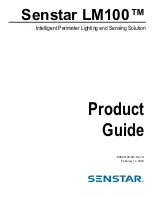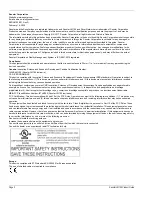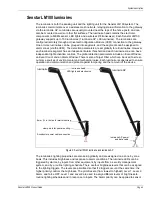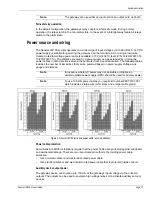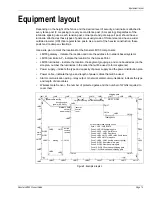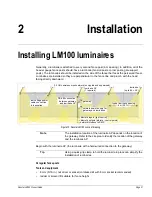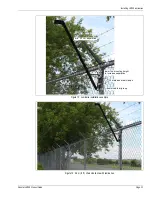
Security factors
Senstar LM100 Product Guide
Page 15
Security factors
There are many important factors to consider when planning a perimeter security system:
•
Fence height - The fence must be high enough to present an effective barrier to climb-over
intrusions. It should also include climb-over deterrent hardware such as barbed wire or razor
ribbon (for flexible fences). Rigid fence types should incorporate a climb over deterrent in their
design (pointed stakes or pales). Senstar recommends that the minimum fence height for a
Senstar LM100 installation on a flexible fence type is 2.5 m (8 ft.). For rigid fence types the
minimum recommended fence height is 2 m (6.5 ft.).
•
Fence condition - the Senstar LM100 detects intrusions by sensing the minute vibrations
caused by an intrusion attempt. Therefore, the fence must be in good condition to prevent any
metal on metal contact or vibrations caused by environmental factors. It may be necessary to
upgrade or repair the perimeter fence to ensure it presents a sufficient barrier against climb
over and crawl under intrusions. If you are not sure of the suitability of your fence for a Senstar
LM100 system, Senstar recommends hiring a local fencing contractor to inspect, and if
required, repair the fence.
•
Fence length - The length of the fence, the number of fence posts and the fence post spacing
determine the number of luminaires required to provide adequate coverage. The maximum
recommended spacing for luminaires is 6 m (20 ft.). The minimum recommended spacing for
luminaires is 3 m (10 ft.). The minimum spacing provides the highest level of security.
Exceeding the maximum recommended spacing can result in areas with reduced detection
sensitivity and gaps in the lighting coverage.
•
Probability of detection (Pd) vs. nuisance alarm rate (NAR) - With a fence-mounted intrusion
detection system there is always a trade-off between the probability of detection and the
nuisance alarm rate. Generally, as the Pd goes up, so too does the NAR. However, a properly
calibrated Senstar LM100 system will provide a high Pd while minimizing the NAR.
•
Alarm assessment/response - What happens when the system triggers an alarm? Can the
alarm be assessed visually? Does the site include CCTV coverage to verify the event?
Senstar recommends engaging a security consultant to discuss the available methods of
alarm assessment. To ensure maximum confidence in the system you must be able to
distinguish between valid alarms and nuisance alarms.
•
Deterrence - The Senstar LM100 can activate or strobe lights at the location where an
intrusion attempt is detected while the intruder is still outside the perimeter fence. Brightly
illuminating the area of attack serves as a powerful deterrent while also providing high quality
light for CCTV coverage.

